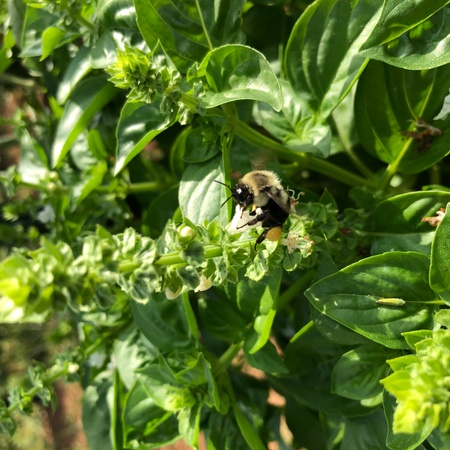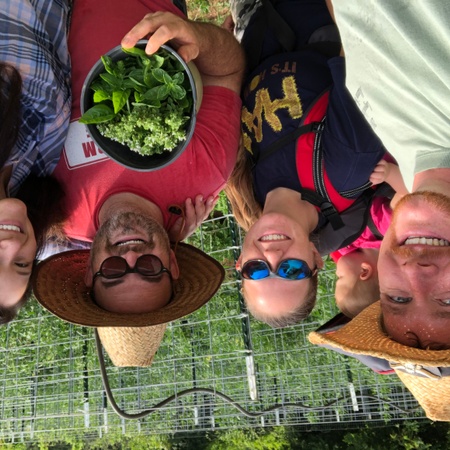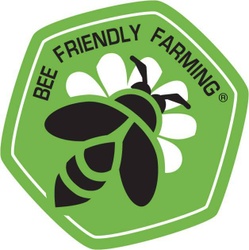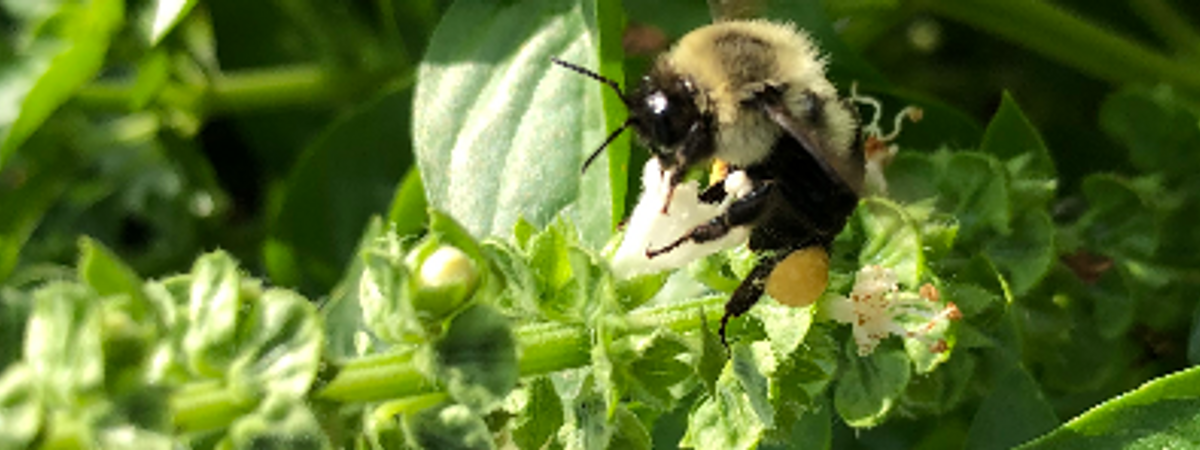

"Bee Friendly Farming is beneficial to farmers, beekeepers, and all those that enjoy the bountiful foods that bees and other pollinators support!"
Kelly Rourke, Director of Programs and Operations, Pollinator Partnership
"Bee Friendly Farming is beneficial to farmers, beekeepers, and all those that enjoy the bountiful foods that bees and other pollinators support!"
Kelly Rourke, Director of Programs and Operations, Pollinator Partnership
Planted a dozen more trees today, friends! I worked in the March/July/November paddock, where everything planted there flowers or fruits in March, July, or November.
It was all apples today, and just me out there, though the chickens provided excellent supervision. Obscure, early varieties like Bevan’s Favorite and St Clair went in the ground today, as well as late-season wonders like Old Fashioned Limbertwig and Virginia Winesap, and lastly local tried-and-true performers like Rockinghan Red and Perkins.
Good weather follows tomorrow, too, so I’ll be up early and pushing to get all the trees in the ground before Christmas.
Then comes the fun of filling in the gaps around them with supporting plants—nitrogen-fixers, insectaries, and dynamic accumulators—everything the farm ecosystem needs to keep plants healthy and bees happy!
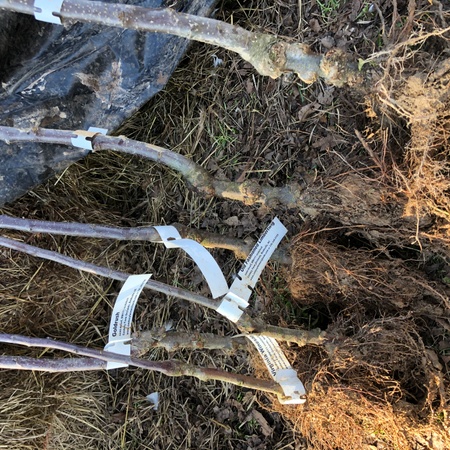
Well, team, its' time to talk about this project's impact.
It's difficult to predict the lasting impact of a planting project after just a few months. For sure, there are material differences we can point to in terms of plants and biodiversity. By my rough estimate: more than 4 dozen apple trees of 4 dozen varieties; 2 dozen blueberry bushes of 9 varieties; 3 dozen varieties of perennial sunchokes; 2 dozen persimmon trees of 9 varieties; nearly 6 dozen shrubs of bush cherry, hazelnut, serviceberry, aronia, forsythia, black locust, and gojiberry; 10 chestnut trees of 4 varieties; 4 oak trees; 6 mulberry trees; 16 vining plants of varying species; and a half dozen perennial vegetable varieties.
These are physical, material changes in the landscape that happily continue to appreciate in value and grow in resilience with each passing season. All together, they produce viable, chemical-free, and rich forage for bees and other pollinators throughout the year from spring-flowering apple trees to summer-flowering black locust, fall-flowering kiwi vines to winter-flowering witch hazel. They will continue to do this, with proper management, for decades if not centuries (when the productive life of fruit trees is considered), and they do ALL of this while fitting into the operation and planning of a working farm and market garden supporting the health of the livestock, the farmer, his customers, and the soil biota upon which they all depend.
We have been happy to support small and local businesses, where the majority of grant funds have been spent. Between Abbotts Farm, Garden & Gun in Halifax, VA and Edible Landscaping in Afton, VA 60% of funds have been spent in this county specifically, and Virginia as a whole. 30% of funds went to Century Farm Orchards in nearby Reidsville, NC, a regional treasure as stewards of more than 600 of the oldest southern apple cultivars. Additional funds went to small, family-owned nurseries in Michigan (Oikos Tree Crops, which we have worked with for years), Z’s Nutty Ridge in McGraw, New York, and Edible Acres in Trumansburg, NY.
We have been especially happy to hear from a few of these vendors that they have seen orders placed from other grant recipients we know and have recommended these nurseries to.
With respect to reach and impact outside of other grant recipients and these vendors, we have been active on social media, and have plans for more video content in 2021. We have recorded and shared a few videos on our farm’s Youtube channel about the grant and how we’re spending the money to honor the mission of this ChangeX opportunity. We would like to do more of these videos in 2021, especially as the plants mature and become more compelling content for us to discuss their impact. We want to create a resource page on our farm website that is just about our journey with this grant and our plans for the farm, and how the prior kickstarted the later, and how other folks can research, purchase, and think about their own efforts to farm wit bees and other pollinators in mind.
We’d also like to share the grant award news and results as the farm grows with local and regional news outlets. We believe the work being done is newsworthy and inspiring, despite the obscure “secrecy” in which many projects take place in this time of COVID.
We are looking forward to talking about this work to school and civic groups. In the past, Ben has taught fruit tree grafting workshops to teachers and students alike for the STEM Academy in the nearby city of Danville, and has spoken at Virginia Polytechnic Institute and State University in Blacksburg, and to regional Master Gardener groups more than once. Just assembling the list of plants, flowering and ripening schedules, and finding sources for plant material has been like doing a masters thesis and there is a lot of information worth sharing!
With the remainder of the grant funds, we will be investing in more perennial flowers and vegetables, from wildflower plantings along the edges of the market garden and perimeter fence to asparagus and strawberry beds that produce yields for people and pollinators alike. A harmonious partnership between farmer and fauna is achievable, and we feel that we are taking steps to show what that might look like.
I (Ben), my wife, our parents, and everyone on our team is grateful here, today, to have received these grant funds to do this good work. I am confident that in the days and years to come, more people in my community of Halifax, VA will appreciate the work that’s been done thanks to ChangeX as our farm grows in diversity and resilience, becoming a local resource and model for development to others everywhere. We’re really just getting started, and could not have done it without ChangeX.
We are forever grateful, and because of you we are having a very happy holiday season, feeling bright about the work and future ahead for us and for our farm.
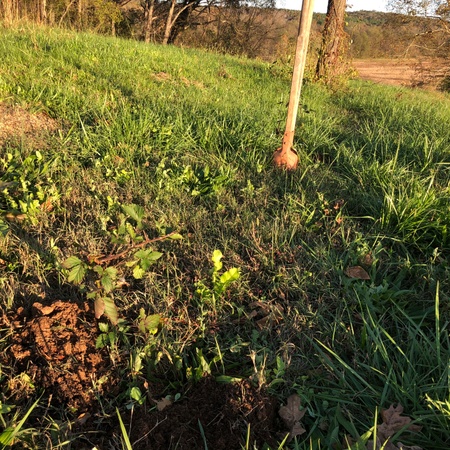
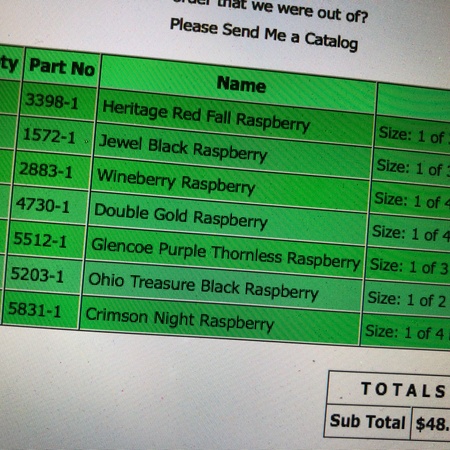
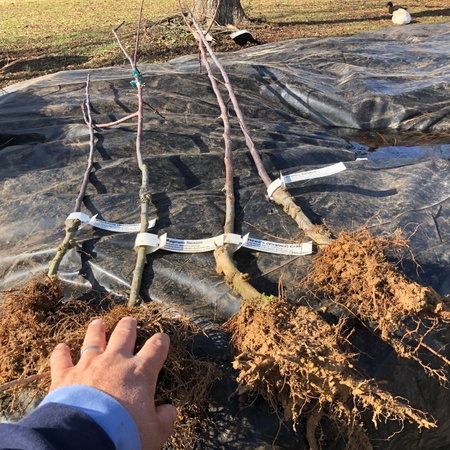
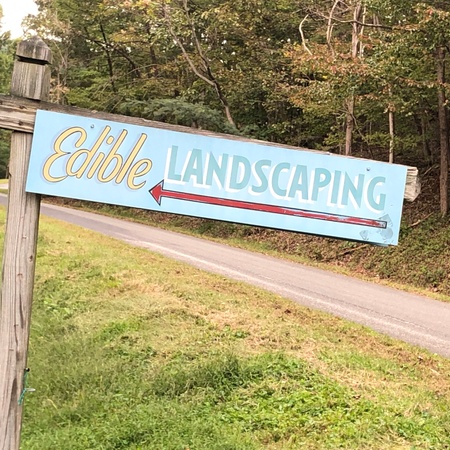
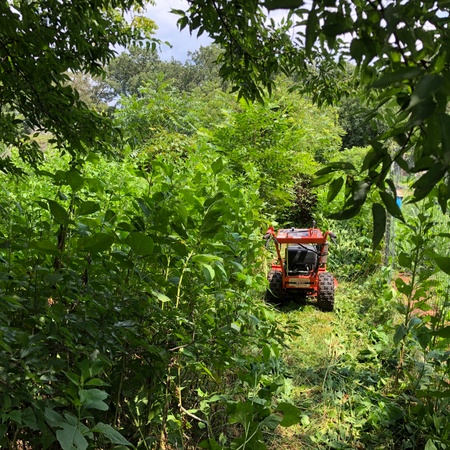
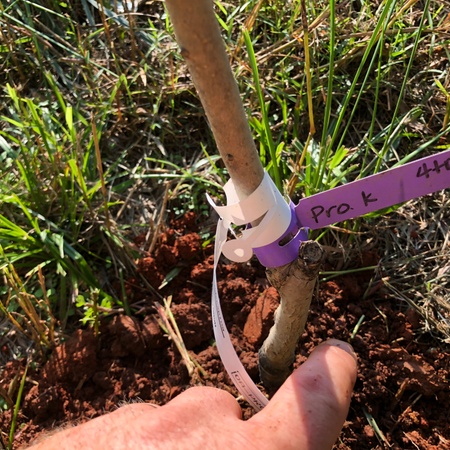
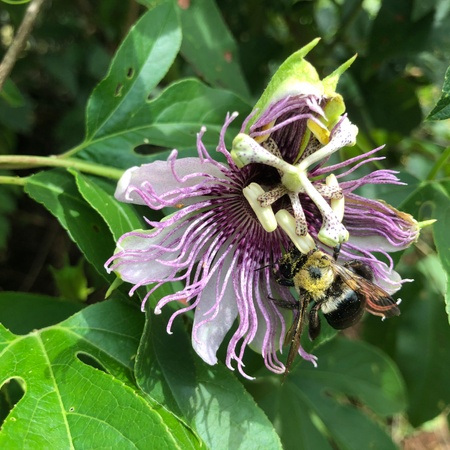
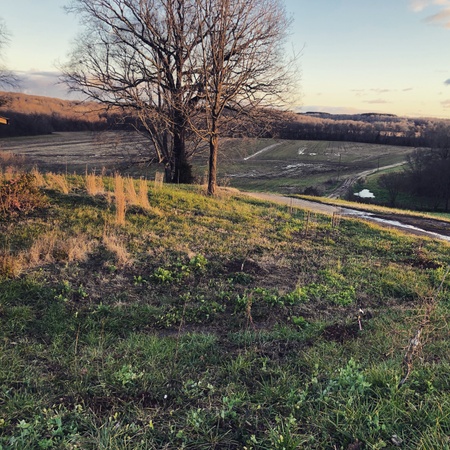
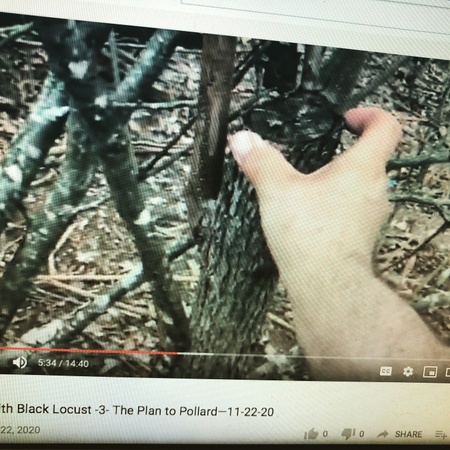
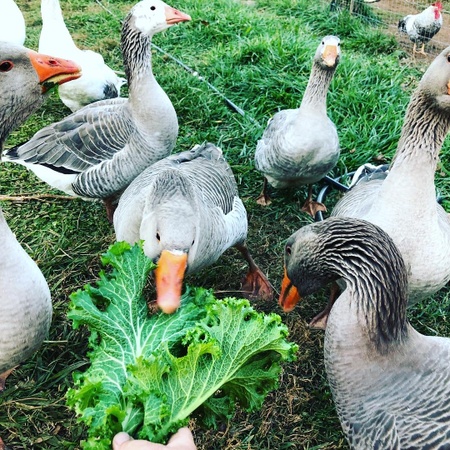
The excitement continues this weekend friends!
Unabated by the rain and sleet, we're continuing to plant trees through the weekend. As of this morning, about half of the 30 heritage apple trees that arrived Saturday are in the ground. They still need to be caged and mulched, but I hope to have them all in the ground by the end of next week.
And more are coming! I'm actually going back to Century Farm Orchards this Saturday to pick up 13 more apple trees, further extending our bloom season and fruit drop. This group of 13 also includes some very obscure varieties like “Mattamuskeet”, ”Nickajack“, and “Notley P #1”!
The purpose of this number of varieties with ripening dates and early-, mid- and late-season bloom times is to mimic the natural diversity that is often suppressed as part of farming, and the benefit is resilience—while a late frost may take out the blooms on a “Mary Reid” or “Carolina Red June” apple tree, they won't affect a tried and true late bloomer like “Terry Winter.”
This pattern of varieties has been reproduced all over the farm, across flowers, vegetables, berry bushes and shrubs, nut trees and fruit trees.
We hope we are setting an example of resilient farming that can be reproduced by farmers at any scale, not just here in Halifax, but anywhere.
~Ben
A very exciting start to the week, folks, as the apple trees have finally arrived!
On Saturday afternoon, I traveled to Reidsville, NC to pick up 30 heirloom apple and pear varieties for the farm. A single, mature apple tree in bloom can serve thousands of bees (and other pollinators), and with these trees we can serve tens of thousands!
Working closely with Century Farm Orchards owner David Vernon, we've curated trees with early-, mid-, and late-spring bloom times guaranteeing we survive any late frosts that may otherwise destroy flower buds. What's more, the trees selected will yield fruit from June all the way to December, or even January!
It was a pleasure to hear from David that other farmers here in Halifax that I've recommended his nursery to have ordered from him this season! What makes David's orchard so special is that he grows nearly 600 varieties of apple tree, and because he's been doing this for 2.5 decades, he is an absolutely INCREDIBLE resource to consult about what grows best in our region, especially under low/no-spray management regimens to safeguard bees.
I enjoyed my correspondence with David so much that I'm actually going back this coming Saturday once more to pick up an additional dozen trees to add to the farm, AND pick up trees ordered by another Halifax farmer to save her on shipping and handling.
I really cannot recommend David's Century Farm Orchards highly enough! And don't be discouraged if you're not local—he ships all over the country!
~Ben
Oh my goodness, y’all, things continue to move along with a very favorable fall and early winter planting season! The weather has been great and pretty much every week as something gets planted it gets watered in generously by natural rainfall.
This last month has seen the addition of more blueberry varieties (thanks to local Halifax nursery Abbott’s Farm Garden and Gun) meaning loads of rich spring and summer blossoms yielding a continuous harvest of berries from June through September!
More persimmons went into the ground, too, including very late-fruiting varieties like Tecumseh and Rosseyanka, varieties which may even hold fruit on the tree into late winter and early spring, just before fresh, pollen- and nectar-rich blooms begin to emerge!
Perennial vegetables from Edible Acres nursery in New York have also arrived! The really exciting thing about these plants is they are perennial VEGETABLE crops! Tubers, root cuttings, bulbs and started plants of Sea Kale, Walking Onions, Welsh Onions, and Good King Henry mean garden borders that provide food for farmers and livestock AND bouquet heads of flowers to attract bees and other pollinators year after year. Perennials only get stronger with each passing year, asking only to be propagated by division every few years—and that just means more plants for everyone!
Also exciting from Edible Acres are the more than FIFTY shade-loving currant and Jostaberry bushes were adding to the landscape. Currants are under appreciated here in the US, being more of a treat in the UK, but their sweet-tart and smoky flavor isn’t the whole story. Currants and Jostaberries flower AND produce fruit in the shade! More productive in the sun, but no slouch along woodland borders PLUS they are deer resistant, these members of the Ribes family are going to be so welcome here by pollinators, by people, and by poultry alike!
It’s all so exciting!
~Ben
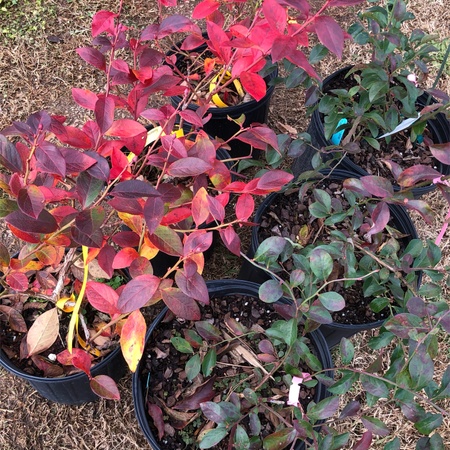
Y'all, so many trees, shrubs, and flowering perennials have been planted over the last month!
As we move into fall and the temperatures drop, the plants go dormant, and the winter rains start, it could not BEE a better time to plant!
Blackberries, raspberries, blueberries and bush cherries have all gone into the ground this month, adding spring as well as summer flowers for foraging pollinators. We've also added black locust, hazelnut, and chestnut trees that yield LOADS of pollen in early spring and summer.
Today is a VERY exciting day as well since our shipment from OIkos Tree Crops in Michigan arrives and that includes nearly 2 dozen varieties of sunchokes! I am really excited about this perennial sunflower relative that will produce continuous flowers from early spring until frost, and then, over winter, their edible tubers are ready to harvest! The tubers are similar to water chestnuts in taste and flavor, and these plants reproduce quite easily (some would argue too easily!) making more and more tubers every year. These are going to be established around the entire garden perimeter and into the orchard and I am so excited for it!
Also arriving today from Oikos are a few more chestnuts, some black mulberry, burgambel oaks, and saskatoons, aka juneberries! Serviceberries are an excellent source of early season pollen, getting to work as soon as the temperatures are right because they have to make their blueberry-sized fruits by June—they work FAST!
The goal is to provide a diverse array of bee and other pollinators forage from trees to flowers to shrubs throughout as much of the year as possible, and I think we're well on our way.
Hello, all!
It's been a hot minute since I posted an update!
A Marek's disease outbreak in our laying flocks has absolutely consumed my time and energy on the farm for the last several weeks, but this project has not been idle.
Two weeks ago, I ordered the first round of perennial plants for the farm, including mulberry trees, serviceberry trees, a handful of chestnut varieties, and 19 VARIETIES of perennial sunchokes! If you don't already know, these sunflower cousins produce an abundance of flowers, are incredibly low-maintenance, come back year after year, AND produce an edible tuber that can be harvested after 1st frost!
I've been working with local farm supply store Abbots in Halifax and they work with a native plants nursery. From them, I have a list of literally HUNDREDS of native plants available either as starts in trays (quite small) or mature plants (hardier, but more pricey). I'm working on prices now to see how to make our grant funds go the farthest.
It also takes a lot of time as I cross reference each plant to make sure it's not toxic to any of our livestock, and to also see if it has any medicinal, culinary, or other value-added use.
As with the sunchokes, it takes time to review all of these plants because I do not look at the bee plantings as a sacrifice, if that makes sense, that is, as something set aside for the bees as a kind gesture but a loss for the farm. Does that make sense? I'm trying to make sure that plants that support bees are integrated fully into the farm's well-being.
What that looks like is things like the sunchokes, that not only feed the bees for two seasons but who then also give us a crop to take to market over winter. The mulberries and chestnuts provide loads of pollen and nectar for bees at different times of the year, but also yield food to help offset the feed cost for the livestock. I'll be adding elderberry cultivars soon, whose giant, umbelliferous flowers are incredible forage for bees (AND parasitic wasps that help control insect pests in the vegetable garden!) but which then yield amazing medicinal berries in the late summer and fall.
I want it all to be of a piece. More updates to come, because there's lots to share.
~Ben
That's so exciting Ben! Let me now if I can do anything to help.
I had to pull over while driving through downtown Chatham today to take in this beautiful front yard flower garden!
This is fantastic inspiration and reference.
If you needed a visual aid, the idea is to create something like this around the entire vegetable garden perimeter. 🐝👌🏻❤️
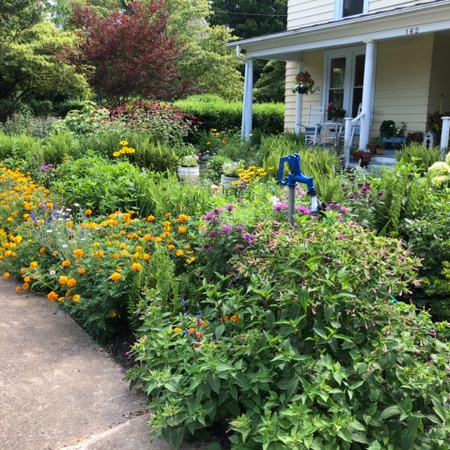
“Bee-ing” Friendly at Broad Shoulders Farm
All, we are so excited for this opportunity to further develop Broad Shoulders Farm as an ecological farm and garden!
We value the health of the soil and the life that sustains it, as healthy soil produces healthy food and our mission is all about growing clean, tasty, nutritionally-dense food.
Ben was so excited to discover this grant because it reflects many of the values and farming practices he already brings to the farm.
When the plantings paid for by this grant are complete and the flowers appear this fall and next spring, we hope to be awash in a symphony of bee activity, and we are really excited to also share the how, what, and why of what we did with other farmers in Halifax County. Imagine if we were a Certified Bee Friendly County?!
There are half-a-dozen stages to the project:
Design - Identify and plan bee friendly bedding areas and short list of plants and suppliers
Secure Funding - Working with ChangeX has been incredibly smooth
Plants List - Compile final list of plant and seed sources and order from suppliers
Bed Prep - While awaiting order fulfillment, begin planting bed preparation
Planting - Let’s get those good bee friends in the ground!
Monitoring and Reporting - LOTS of videos and social media shares about what we’re doing and how it’s coming along
So where are we going to put this bee friendly stuff?
Our main planting area will be along the inside of the vegetable garden fence as established. This 6’ tall, welded wire fence is a perfect scaffold for vegetation, and as the bee forage crops develop they’ll serve as an excellent windbreak to protect vegetable crops.
The fence around the main garden provides more than 800 running feet of space to develop beds for perennial flowers, herbs, vegetables, shrubs, and espaliered fruit trees. What’s more, we can double the space available by using the opposite side of the fence as well.
We also plan to make use of both the inner and outer fence lines of the Composting Garden and the Rooster Run, which all together will make nearly 3000 running feet of beds designed to support bee activity!
But, our plan is not just for the spaces closest to our daily operations. The farm and garden are backed up against 100+ acres of forest, and we are building on the species already found in the tree line by planting additional chestnut, hazelnut, tulip poplar, and black locust trees—all excellent sources of forage for bees at different times of the year. In this way, our plan is to offer an incredible, diverse, and resilient buffet of nectar and pollen sources throughout the year when bees are active.
Additionally, there are the fruit trees and supporting species of plants going into the orchard restoration and poultry food forest paddocks, so really, the whole place is going to be alive with bee and pollinator activity if we do this right.
Preference will be given at every opportunity for plants that are perennial in nature. With Ben’s background as a Virginia Master Gardener and his certifications in Permaculture, we are confident that we will plant appropriate, long-lived and “bee-loved” species.
Most live plants will be purchased from suppliers Ben has worked with in the past including Stark Brothers Nursery, Cold Stream Farm, Raintree Nursery, and Edible Landscaping in Afton, VA. For plants that need to be started from seed, we will work with local greenhouse and nursery Tuck Family Farms to grow transplants to be set into the beds once readied; seeds will likely be sourced from Johnny’s, Baker Creek, Burpee, and Seedsavers Exchange.
We don’t want to hide our light under a bushel, and Ben would like to use his drone and social media channels to record videos discussing what is happening at each stage of the project, and opportunities for folks in the community to get involved. Social distancing in the era of COVID 19 may restrict many activities, but at the least we are hopeful to answer questions in live video discussions and on social media.
If you can’t tell, we are all really excited about this!
There are a lot of moving parts to this project, and many, many opportunities for folks to be involved, to learn, and to try and reproduce any succeses we have—and avoid any failures we make!—so please share this project far and wide and follow us on this awesome journey.
~The Bee Friendly at Broad Shoulders Farm Team
We had our first meeting this morning at the farm and garden, and while not everyone could make it, the bees sure were out! Matt got some great pics of bees with their hips just LOADED UP with pollen! They were working the basil, some of which is flowering, and seemed really, really happy for the forage.
The team walked the property and discussed the overall plan to create more than 2500’ of bee-friendly, pollinator-welcoming perennial plants from trees and shrubs to watering stations and a continuous bloom of flowers for pollen and nectar forage. I’ll do another update that details our plans soon!
